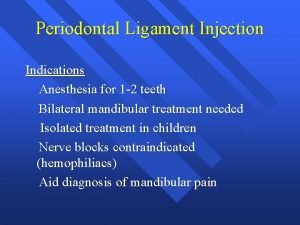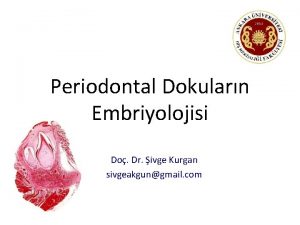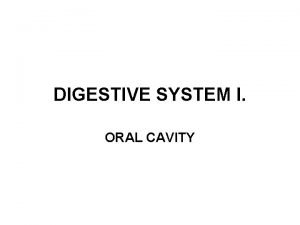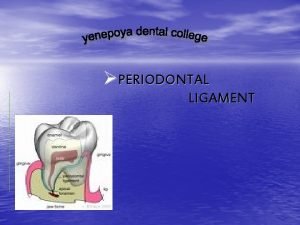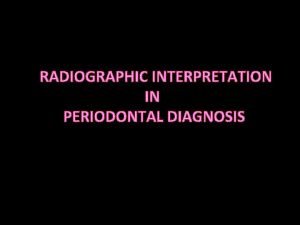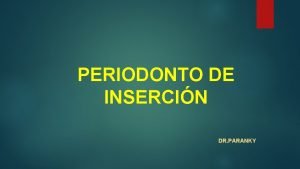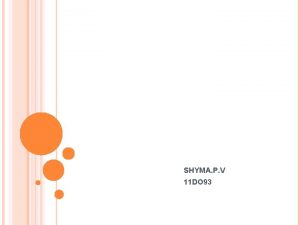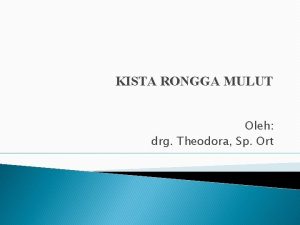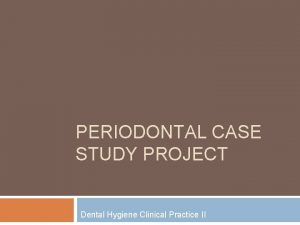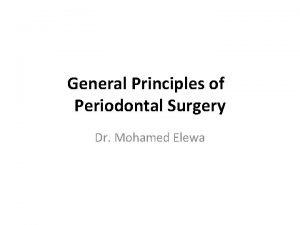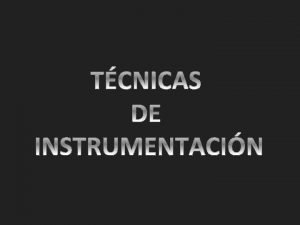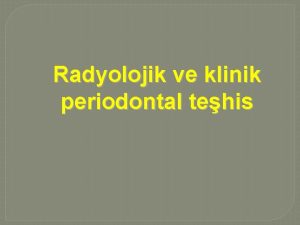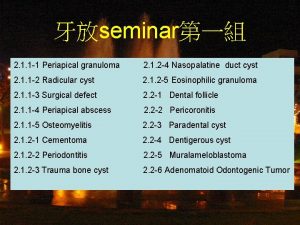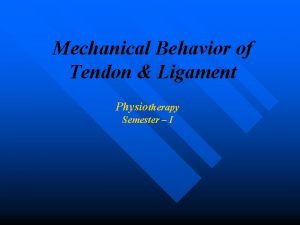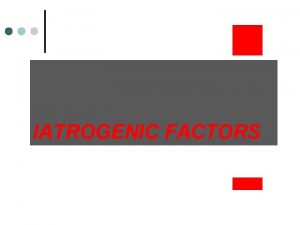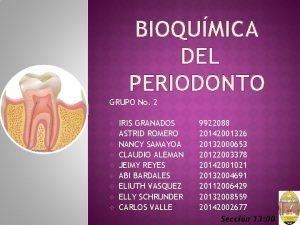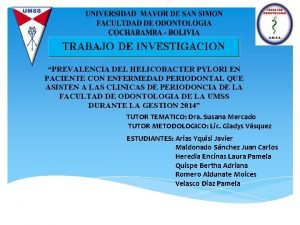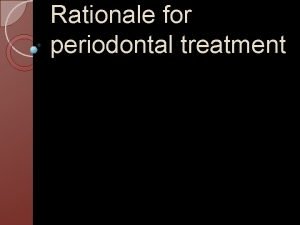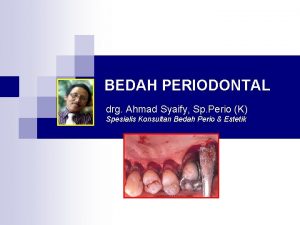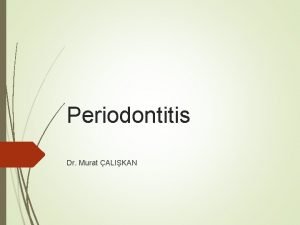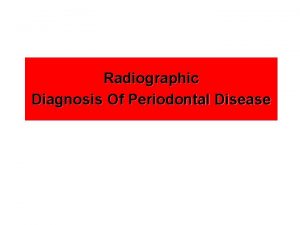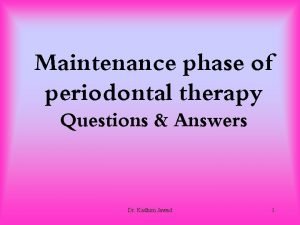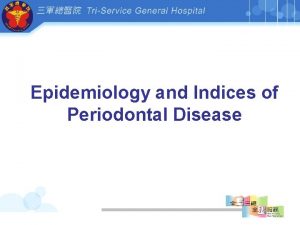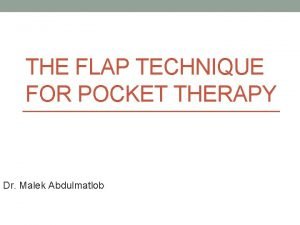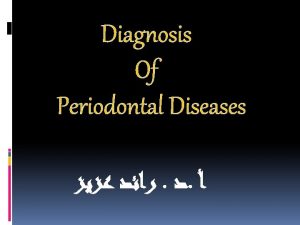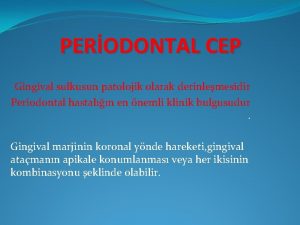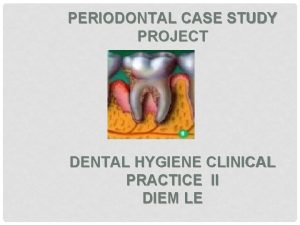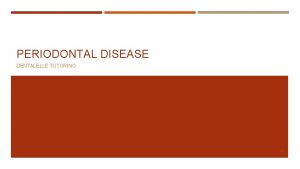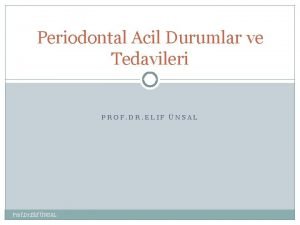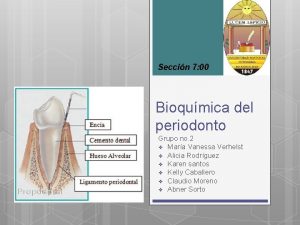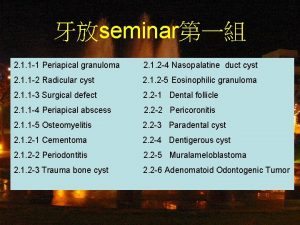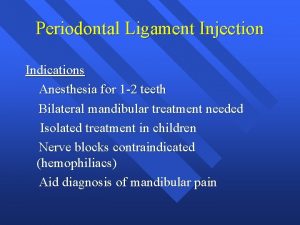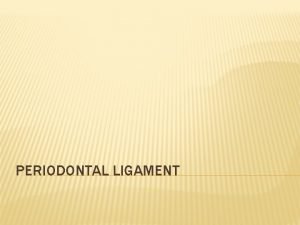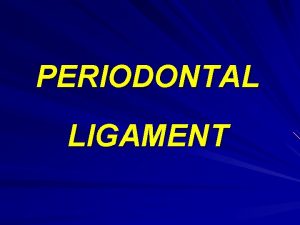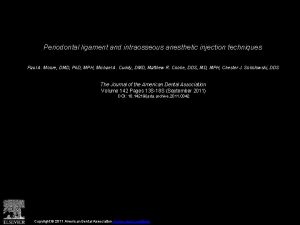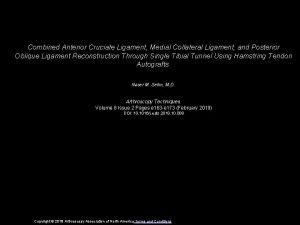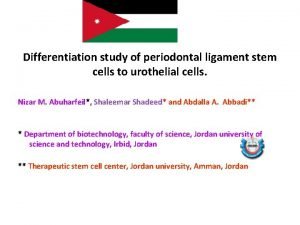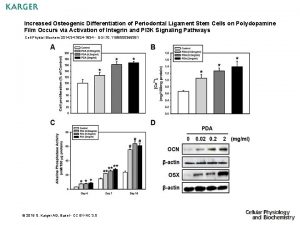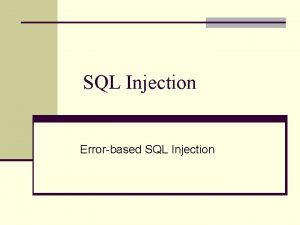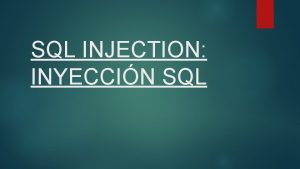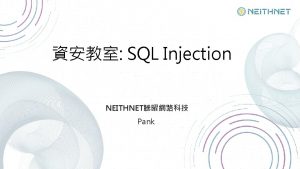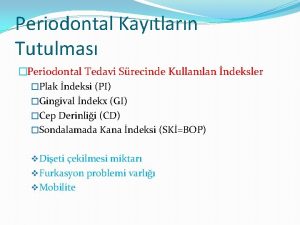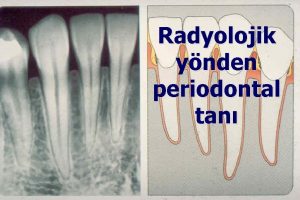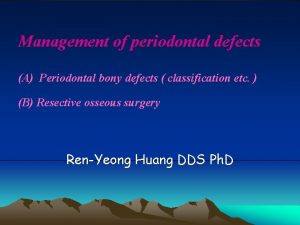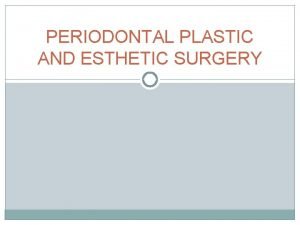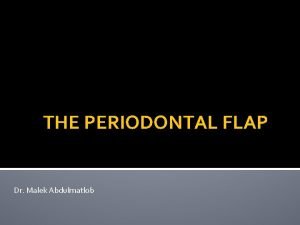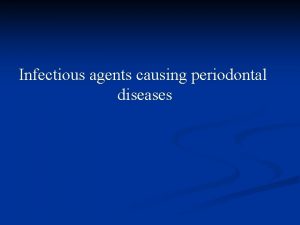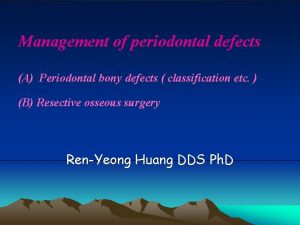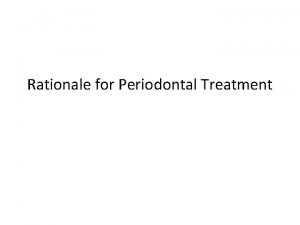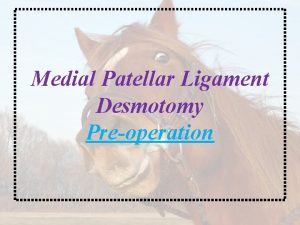Periodontal Ligament Injection Indications Anesthesia for 1 2










































- Slides: 42

Periodontal Ligament Injection Indications Anesthesia for 1 -2 teeth Bilateral mandibular treatment needed Isolated treatment in children Nerve blocks contraindicated (hemophiliacs) Aid diagnosis of mandibular pain

Periodontal Ligament Injection Contraindications Primary teeth Infection/inflammation Psychological need for “feeling numb”

Periodontal Ligament Injection Advantages Avoid unecessary areas of anesthesia Minimizes dosage of anesthetic Supplements partially effective block

Periodontal Ligament Injection Disadvantages Administration difficult in some areas May cause post-op discomfort, tooth extrusion, &/or tissue necrosis Excess pressure may break cartridge

Periodontal Ligament Injection Technique Insert needle on long axis of tooth Deposit 0. 2 ml slowly (30 secs) Should feel resistance to deposition




Intraosseous Infiltration Indications Local factors preclude adequate anesthesia dense cortical plate infection / inflammation severe pulpal irritation

Intraosseous Infiltration Injection site Lateral - distil to tooth treated avoid mental foramen area Vertical - for edentulous area on alveolar crest, mesial or distil to treatment area

Intraosseous Infiltration Stabident System Technique Apply topical, consider local infiltration Push perforator through tissue to bone Activate in short spurts until resistance is lost ( approx. 2 secs) Hold syringe in pen grip, into perforation Inject “plain” anesthetic (0. 6 ml-1 -2 teeth)

Mylohyoid Nerve Infiltration Mylohyoid nerve may provide sensation to molar teeth May be used as a supplement to IAN block Supplements lingual anesthesia

Mylohyoid Nerve Infiltration Technique Retract tongue medially Penetrate mucosa of floor of mouth by alveolus Aspirate, deposit 0. 5 ml solution





Extraoral Nerve Blocks Maxillary Infraorbital Mandibular

Extraoral Nerve Blocks Indications Infection Inability to open mouth Presence of pathology Trauma Diagnostic or Theraputic reasons

Extraoral Maxillary/Mandibular Nerve Block Target area Foramen Rotundum / Foramen Ovale Penetration Point Skin overlying sigmoid notch Landmarks Pterygoid plates

Extraoral Maxillary/Mandibular Nerve Blocks Armamentarium 20 -22 gauge spinal needle (3 -5 inch) 3 ml syringe Alcohol skin prep


Extraoral Maxillary/Mandibular Nerve Blocks Technique Prep skin overlying sigmoid notch, Anesthetize skin and masseter muscle Pass spinal needle through sigmoid notch until the pterygoid plate is contacted

Extraoral Maxillary/Mandibular Nerve Blocks Technique Withdraw, then re-direct anterior/superior to 4. 5 cm for maxillary block Re-direct posterior/superior toward Foramen Ovale for mandibular block

Extraoral Maxillary/Mandibular Nerve Blocks Technique Remove stylette Place filled syringe on spinal needle Aspirate and deposit 3 ml of anesthetic solution









Extraoral Infraorbital Nerve Block Landmarks Infraorbital rim Infraorbital foramen Pupil

Extraoral Infraorbital Nerve Block Technique Palpate foramen- 6 mm below rim on pupillary line Prep skin Penetrate skin and contact bone Redirect until foramen entered Advance 2 -3 mm and deposit solution







 Periodontal ligament injection definition
Periodontal ligament injection definition Cushion hammock ligament
Cushion hammock ligament Mine ektoderm
Mine ektoderm Papilla ductus parotideus
Papilla ductus parotideus Synonyms of periodontal ligament
Synonyms of periodontal ligament Lamina dura
Lamina dura Periodonto de insercion
Periodonto de insercion Infrabony
Infrabony Kista primordial adalah
Kista primordial adalah Gingival description
Gingival description Principles of periodontal surgery
Principles of periodontal surgery Lima apical maestra
Lima apical maestra Modified widman flap
Modified widman flap Who sondu nedir
Who sondu nedir Principles of scaling and root planing
Principles of scaling and root planing Lateral periodontal cyst
Lateral periodontal cyst Periodontal response to external forces
Periodontal response to external forces Periodontal tendonitis
Periodontal tendonitis Dental charting abbreviations
Dental charting abbreviations Iatrogenic factors in periodontal disease
Iatrogenic factors in periodontal disease Grupos de fibras del ligamento periodontal
Grupos de fibras del ligamento periodontal Prevalencia
Prevalencia Rationale for periodontal treatment
Rationale for periodontal treatment Enap periodontal
Enap periodontal Periodontal cep
Periodontal cep Perimylolysis
Perimylolysis Periodontal abscess
Periodontal abscess Non-infective
Non-infective Maintenance phase of periodontal therapy
Maintenance phase of periodontal therapy Plaque index scoring criteria
Plaque index scoring criteria Inverse bevel incision
Inverse bevel incision Diagnosis of periodontal disease
Diagnosis of periodontal disease Deskuame
Deskuame Dental case
Dental case Periodontal disease
Periodontal disease Modifiye stillman
Modifiye stillman Gtr indications
Gtr indications Anug belirtileri
Anug belirtileri Ligamento periodontal
Ligamento periodontal Fases del tratamiento periodontal
Fases del tratamiento periodontal Radiolucence
Radiolucence Rap texter som rimmar
Rap texter som rimmar Nyckelkompetenser för livslångt lärande
Nyckelkompetenser för livslångt lärande
